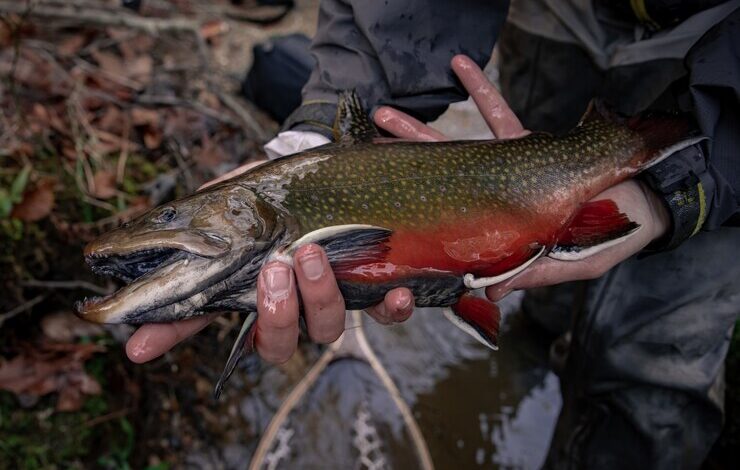A Step-by-Step Guide to Fiskning

Welcome to the world of Fiskning, where tranquility meets excitement in the art of fishing! Whether you’re a seasoned angler or a novice looking to cast your first line, Fiskning offers an immersive experience that brings you closer to nature and yourself. Join us on a journey through the waters as we explore the ins and outs of this beloved pastime, from its cultural roots to essential tips for success. So grab your gear and get ready to reel in some adventure with our step-by-step guide to Fiskning!
Understanding the Concept of Fiskning
Fiskning, a term originating from Scandinavian countries, encompasses more than just fishing; it embodies a deep connection to nature and the thrill of the chase. Unlike traditional angling, Fiskning is about immersing oneself in the entire experience – from selecting the perfect spot to patiently waiting for that telltale tug on the line.
It’s not just about catching fish; it’s about being present in the moment, attuned to the rhythms of nature and your surroundings. Fiskning encourages mindfulness and appreciation for the beauty that surrounds us, both above and below the water’s surface.
This holistic approach sets Fiskning apart as a meditative practice that nourishes both body and soul. So next time you cast your line into the depths, remember that Fiskning is more than a hobby – it’s a way of life.
The History and Cultural Significance of Fiskning
Fiskning, the art of ice fishing, has deep roots in Scandinavian culture. Originating in countries like Sweden, Norway, and Finland, fiskning has been a way of life for generations. In these cold northern regions where frozen lakes are abundant during winter, ice fishing became not just a means of survival but a tradition passed down through families.
The practice of fiskning goes beyond catching fish; it embodies patience, skill, and respect for nature. For many Scandinavians, fiskning is more than just a hobby—it’s a way to connect with their heritage and the environment around them.
Over time, fiskning has evolved from simple tools like hand augers to modern equipment such as portable shelters and electronic fish finders. Despite these advancements, the essence of fiskning remains rooted in tradition and cultural significance.
Today, fiskning continues to be an important part of Nordic identity and a beloved pastime that brings communities together on frozen lakes across the region.
Necessary Equipment for Fiskning
To embark on a successful fiskning adventure, having the right equipment is essential. Starting with a sturdy fishing rod that can handle the weight of potential catches is key. Make sure it’s comfortable to hold for long periods and has good flexibility to feel those subtle bites.
Next, you’ll need a reliable fishing reel that complements your rod. Look for one with smooth drag capabilities and easy-to-use features for seamless casting and reeling in your prized catch. Don’t forget about strong fishing line – opt for a suitable pound test based on the type of fish you’re targeting.
Pack your tackle box with an assortment of lures, hooks, sinkers, and bobbers to entice different fish species effectively. Consider including pliers or multitools to assist with hook removal and other tasks while out on the water. Don’t overlook essentials like sunscreen, sunglasses, a hat, and proper attire to stay comfortable during your fiskning excursion.
Choosing the Right Location for Fiskning

Choosing the right location for Fiskning is crucial to a successful fishing experience. Consider the type of fish you want to catch and their preferred habitat. Lakes, rivers, or coastal areas each offer unique opportunities and challenges for anglers.
Research local fishing reports or talk to experienced fishermen in the area to gather information about productive spots. Look for signs of fish activity such as jumping baitfish or diving birds that can indicate a feeding frenzy.
Pay attention to weather conditions like temperature, wind direction, and water clarity when selecting a spot. Fish tend to be more active during dawn and dusk, so plan your fishing trip accordingly.
Consider accessibility and amenities at different locations. Ensure you have all necessary permits and permissions before starting your Fiskning adventure. By choosing the right location based on these factors, you increase your chances of having a successful day on the water.
Techniques and Tips for Successful Fiskning
When it comes to Fiskning, using the right techniques and tips can significantly improve your chances of a successful fishing experience. One key technique is to understand the behavior of the fish you’re targeting. Different species have different habits and preferences when it comes to bait and lures.
Another important tip is to be patient and observant. Sometimes, waiting for the perfect moment or adjusting your approach based on what you see in the water can make all the difference between a catch and a miss.
Additionally, varying your casting distance and angle can help attract fish that may be hiding in different spots. Experimenting with different speeds of retrieval or jigging motions can also entice hesitant fish into biting.
Staying adaptable and open to trying new methods will keep your fishing trips exciting and rewarding. Remember, each day on the water is an opportunity to learn something new about Fiskning!
Safety Precautions to Follow while Fiskning
When it comes to fiskning, safety should always be a top priority. Before heading out to your favorite fishing spot, make sure you have the necessary safety equipment on hand. This includes life jackets, first aid kits, and any other essential items for emergencies.
Always check the weather forecast before setting out – unexpected storms can pose a serious danger when you’re out on the water. It’s also important to inform someone of your fishing plans and expected return time in case of any unforeseen circumstances.
Be mindful of your surroundings while fiskning – watch out for slippery rocks or uneven terrain that could cause accidents. Keep a safe distance from others who may be fishing nearby to avoid entanglements or collisions.
Remember to stay hydrated and protect yourself from the sun by wearing sunscreen and a hat. By following these safety precautions, you can enjoy a worry-free fishing experience every time you head out onto the water.
Benefits of Fiskning for Physical and Mental Health
Engaging in fiskning, also known as fishing, offers a multitude of benefits for both physical and mental well-being. The serene act of casting a line into the water can be a therapeutic escape from the hustle and bustle of daily life.
Physically, fiskning provides an opportunity to engage in low-impact exercise while enjoying nature’s beauty. Reeling in a catch can enhance muscle strength and improve coordination skills.
Mentally, the peaceful surroundings of a lake or river can reduce stress levels and promote relaxation. The focus required to bait your hook and patiently wait for a bite can help clear the mind and increase mindfulness.
Furthermore, spending time outdoors fishing promotes vitamin D absorption from sunlight exposure, which is essential for overall health. It also fosters a sense of connection with nature that can lead to increased feelings of happiness and contentment.
Incorporating fiskning into your routine can have lasting positive effects on both your body and mind.
Conclusion
Fiskning is more than just a fishing technique. It’s a tradition deeply ingrained in Scandinavian culture that offers not only the thrill of catching fish but also the opportunity to connect with nature and unwind from the stresses of everyday life. By understanding its history, equipping yourself properly, choosing the right location, employing effective techniques, following safety precautions, and reaping the physical and mental health benefits it provides, you can truly appreciate all that Fiskning has to offer. So grab your gear, head out to a serene lake or river, and experience the joy of Fiskning for yourself!



